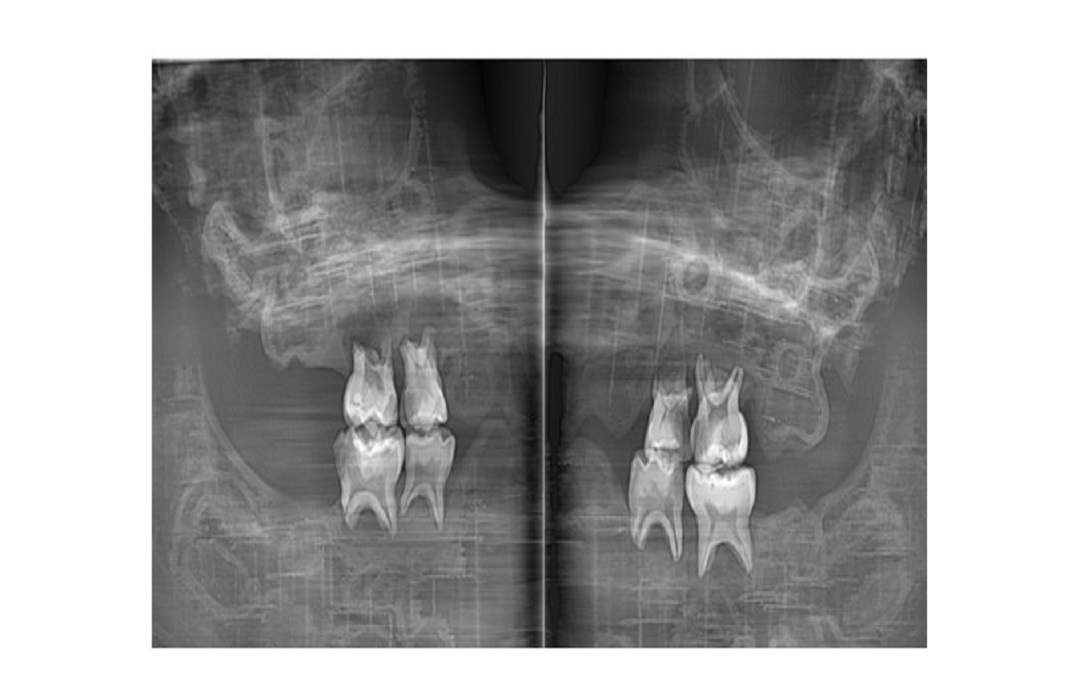Accuracy of Extraoral Bitewing Compared with Histopathology in Proximal Caries Detection of Primary Molar Teeth
DOI:
https://doi.org/10.69650/ahstr.2024.985Keywords:
extraoral bitewing radiographs, proximal caries, primary teeth, caries diagnosisAbstract
An accurate diagnosis of dental caries leads to a suitable treatment plan and prevents premature loss of primary teeth. Intraoral bitewing radiography helps caries determination but has limitations in pediatric patients with severe gag reflexes while the extraoral bitewing radiograph resolved the patients who refused to undergo intraoral radiographs. The research objective was to compare the accuracy of extraoral bitewing radiography and the gold standard histopathological examination for proximal caries detection in the primary molars. Twenty-four extracted primary molars with and without proximal caries were divided into three groups and arranged in the mimetic alveolar sockets of a 3D-printed skull and mandible. Two observers evaluated extraoral bitewing images separately twice at one-week intervals. The weighted kappa coefficients showed excellent intra-observer and inter-observer agreements between each session of the extraoral bitewing radiographic assessments. The Mann-Whitney U test showed no difference between the radiographic grading scores of extraoral bitewing images and the gold standard. The sensitivity, positive predictive value (PPV), negative predictive value (NPV), and the area under the receiver operating characteristic (ROC) curve in cavitated carious lesions were higher than in non-cavitated carious lesions. In conclusion, extraoral bitewing is an alternative radiography for pediatric patients who are either uncooperative or intolerant to intraoral radiography.
References
Abdinian, M., Razavi, S. M., Faghihian, R., Samety, A. A., & Faghihian, E. (2015). Accuracy of digital bitewing radiography versus different views of digital panoramic radiography for detection of proximal caries. Journal of dentistry (Tehran, Iran), 12(4), 290.
Abu El-Ela, W. H., Farid, M. M., & Mostafa, M. S. E.-D. (2016). Intraoral versus extraoral bitewing radiography in detection of enamel proximal caries: an ex vivo study. Dentomaxillofacial Radiology, 45(4), 20150326.
Aps, J. (2020). Radiography in pediatric dental practice. Clinical Dentistry Reviewed, 4(1), 1-16.
Chan, M., Dadul, T., Langlais, R., Russell, D., & Ahmad, M. (2018). Accuracy of extraoral bite-wing radiography in detecting proximal caries and crestal bone loss. The Journal of the American Dental Association, 149(1), 51-58.
De Menezes Oliveira, M. A. H., Torres, C. P., Gomes‐Silva, J. M., Chinelatti, M. A., De Menezes, F. C. H., Palma‐Dibb, R. G., & Borsatto, M. C. (2010). Microstructure and mineral composition of dental enamel of permanent and deciduous teeth. Microscopy research and technique, 73(5), 572-577.
Diniz, M. B., Boldieri, T., Rodrigues, J. A., Santos-Pinto, L., Lussi, A., & Cordeiro, R. C. (2012). The performance of conventional and fluorescence-based methods for occlusal caries detection: an in vivo study with histologic validation. The Journal of the American Dental Association, 143(4), 339-350.
Felemban, O. M., Loo, C. Y., & Ramesh, A. (2020). Accuracy of Cone-beam Computed Tomography and Extraoral Bitewings Compared to Intraoral Bitewings in Detection of Interproximal Caries. The Journal of Contemporary Dental Practice, 21(12), 1361-1367.
Johnson, K. B., Mol, A., & Tyndall, D. A. (2021). Extraoral bite-wing radiographs: A universally accepted paradox. Journal of the American Dental Association, 152(6), 444-447.
Kamburoğlu, K., Kolsuz, E., Murat, S., Yüksel, S., & Özen, T. (2012). Proximal caries detection accuracy using intraoral bitewing radiography, extraoral bitewing radiography and panoramic radiography. Dentomaxillofacial Radiology, 41(6), 450-459.
Little, R., Howell, J., & Nixon, P. (2020). COVID-19 and beyond: implications for dental radiography. British Dental Journal, 229(2), 105-109.
MacDonald, D. S. M., Colosi, D. C., Mupparapu, M., Kumar, V., Shintaku, W. H., & Mansur, A. (2020). Guidelines for oral and maxillofacial imaging: COVID-19 considerations. Oral surgery, oral medicine, oral pathology and oral radiology.
Mallya, S., & Lam, E. W. N. (2018). White and Pharoah's Oral Radiology: Principles and Interpretation (8th ed.). Elsevier Health Sciences.
Ray, P., Manach, Y. L., Riou, B., Houle, T. T., & Warner, D. S. (2010). Statistical evaluation of a biomarker. The Journal of the American Society of Anesthesiologists, 112(4), 1023-1040.
Russell, M., & Pitts, N. (1993). Radiovisiographic diagnosis of dental caries: initial comparison of basic mode videoprints with bitewing radiography. Caries Research, 27(1), 65-70.
Selwitz, R. H., Ismail, A. I., & Pitts, N. B. (2007). Dental caries. The Lancet, 369(9555), 51-59.
Susan, S. (2015). Oral cavity. In R. B. Neel Anand, Patricia Collins, Alan R Crossman, Michael Gleeson, Girish Jawaheer, Ariana Smith, Jonathan D Spratt, Mark D Stringer, R Shane Tubbs, Richard Tunstall, Alan J Wein and Caroline B Wigley (Ed.), Gray’s anatomy: the anatomical basis of clinical practice (41th ed.). Elsevier.
Terry, G. L., Noujeim, M., Langlais, R. P., Moore, W. S., & Prihoda, T. J. (2016). A clinical comparison of extraoral panoramic and intraoral radiographic modalities for detecting proximal caries and visualizing open posterior interproximal contacts. Dentomaxillofacial Radiology, 45(4), 20150159.
Turner, E. G., & Dean, J. A. (2015). Development and Morphology of the Primary Teeth. McDonald and Avery's Dentistry for the Child and Adolescent-E-Book.
Tyndall, D. A., Ludlow, J. B., Platin, E., & Nair, M. (1998). A comparison of Kodak Ektaspeed Plus Film and the Siemens Sidexis Digital Imaging System for caries detection using receiver operating characteristic analysis. Oral Surgery, Oral Medicine, Oral Pathology, Oral Radiology, and Endodontology, 85(1), 113-118.
Villoria, E. M., Rodrigues, R. C. V., do Nascimento Pereira, C. H., Conceição, G. S. A., & Soares, R. V. (2021). The importance of digital radiographic systems in dental schools and oral radiology centers as part of reopening during the COVID-19 pandemic. Imaging Science in Dentistry, 51(1), 91.
Wenzel, A. (2014). Radiographic display of carious lesions and cavitation in approximal surfaces: advantages and drawbacks of conventional and advanced modalities. Acta Odontologica Scandinavica, 72(4), 251-264.
Whaites, E., & Drage, N. (2020). Radiography and Radiology for Dental Care Professionals E-Book. Elsevier Health Sciences.
Wong, A., Subar, P. E., & Young, D. A. (2017). Dental caries: an update on dental trends and therapy. Advances in Pediatrics, 64(1), 307-330.

Downloads
Published
How to Cite
Issue
Section
License
Copyright (c) 2024 Asian Health, Science and Technology Reports

This work is licensed under a Creative Commons Attribution 4.0 International License.













